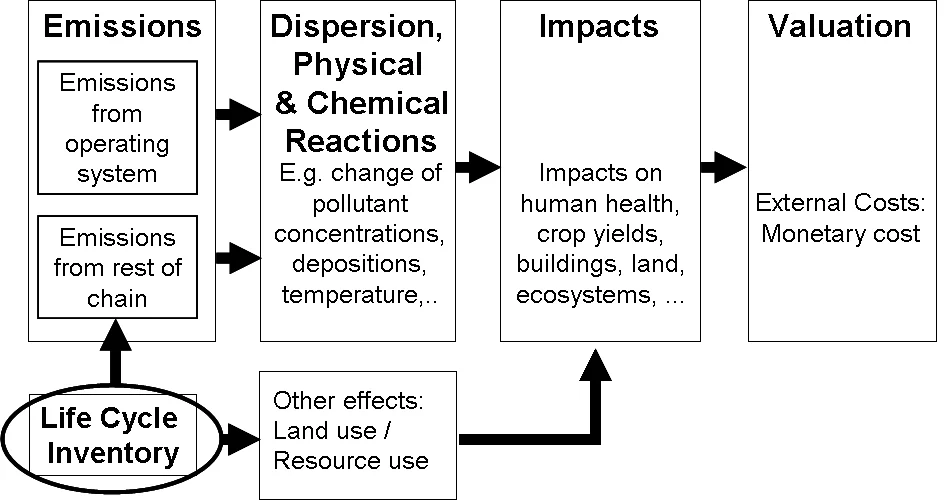The use of energy technologies is often associated with impacts on human health and environment. The goal of environmental impact assessment is the modeling and quantification of these effects.
Important energy technologies are for example power plants for electricity production, heating systems, combined heat and power (CHP) plants, and vehicles. Air pollutants emitted from industry, households, or traffic are transported by wind through the air and cause health damages when inhaled by humans. Electric cars do not produce exhaust emissions but, like all cars, emissions of particulate matter due to abrasion from tires, mechanical brakes, and road abrasion.
Not only the direct emissions from the operating system (e.g. the power plant, or the vehicle) have to be considered, but also impacts that arise from the life cycle of the system (e.g. the fuel supply, the production of metals and other materials for power plants, the manufacturing of vehicles, the impacts of roads and other infrastructure, etc.).
The quantified impacts include damages on human health, impacts on crop yields, damages on ecosystems, damages on materials, and climate change. A method to aggregate different environmental impacts is the use of external costs.
The focus of the Technology Assessment (TA) group is on the combination of environmental impact and external cost assessment with full-scope life cycle inventory data from the ecoinvent database.

